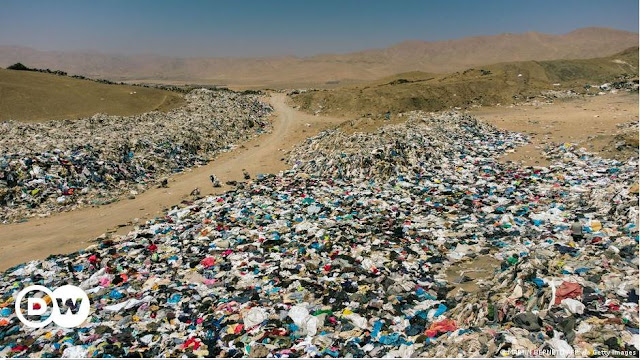Shared by Lorena Carreño:
1. Topic: The Price of Fast Fashion
2. Contents:
A. What is it and how it started.
B. How it is produced
C. Impact on the environment and human lives
D. Alternatives
3. Driving Questions:
How many clothes are produced in a year?
What materials are used to manufacture clothing?
Who makes our garments?
How are they made?
What fabrics are our clothes made of?
What happens to our clothes when we get rid of them?
Can all clothes be recycled?
How are clothes recycled?
What percentage of discarded clothes are recycled?
What happens to clothes that are not recycled?
What is the impact of fast fashion on the environment? On human lives?
How can the fashion industry grow while addressing the problem of environmental pollution?
What alternatives can you think of?
Cooperative techniques:
See, Think, Wonder: I use this technique to introduce the topic. For example: I show the students a photo of the Atacama desert where tons of discarded clothes were dumped (it was in the papers two-three months ago), and I ask them to describe the photo and to tell me what place it is, what is going on, how all those garments ended up there, why, etc. to stimulate their curiosity. I use this technique to introduce every sub-topic. I use photos or short videos.
Think, pair, share: I ask them all kinds of questions related to the topic, to review relevant vocabulary they already know (clothing, maybe fabrics), to introduce new words (CALP), to check what they know about fashion in general and about fast fashion in particular, to check if they know what the impact of this industry has on the environment and on people, etc. The way I do it is: sometimes I will ask students to answer the questions individually, then they´ll share their answers with a classmate and then we will have a class discussion. Other times they will work in pairs or in groups of three from the very beginning and then we will have a class discussion.
Group research: students will be asked to look for information in groups that will be shared with the rest of the class later and used for the final product.
Final product: an installation/poster to raise awareness of the impact fast fashion has on the environment. It should include at least one alternative to reduce the consumption of fast fashion.
I have used a much simpler version of this lesson (it was not project-based) in my classes at the COSCYL (Conservatorio superior de Castilla y León, Salamanca) where I teach English.
Here most students have a high level of English (B2-C1), so for this lesson I used real materials to challenge them.
I used a video from Youtube called "The True Cost of Fast Fashion":
And a TEDtalk video called "The life cycle of a T-shirt":
and photos from landfills and the Atacama desert. It was a great lesson to stimulate their critical thinking skills.



Comments
Post a Comment